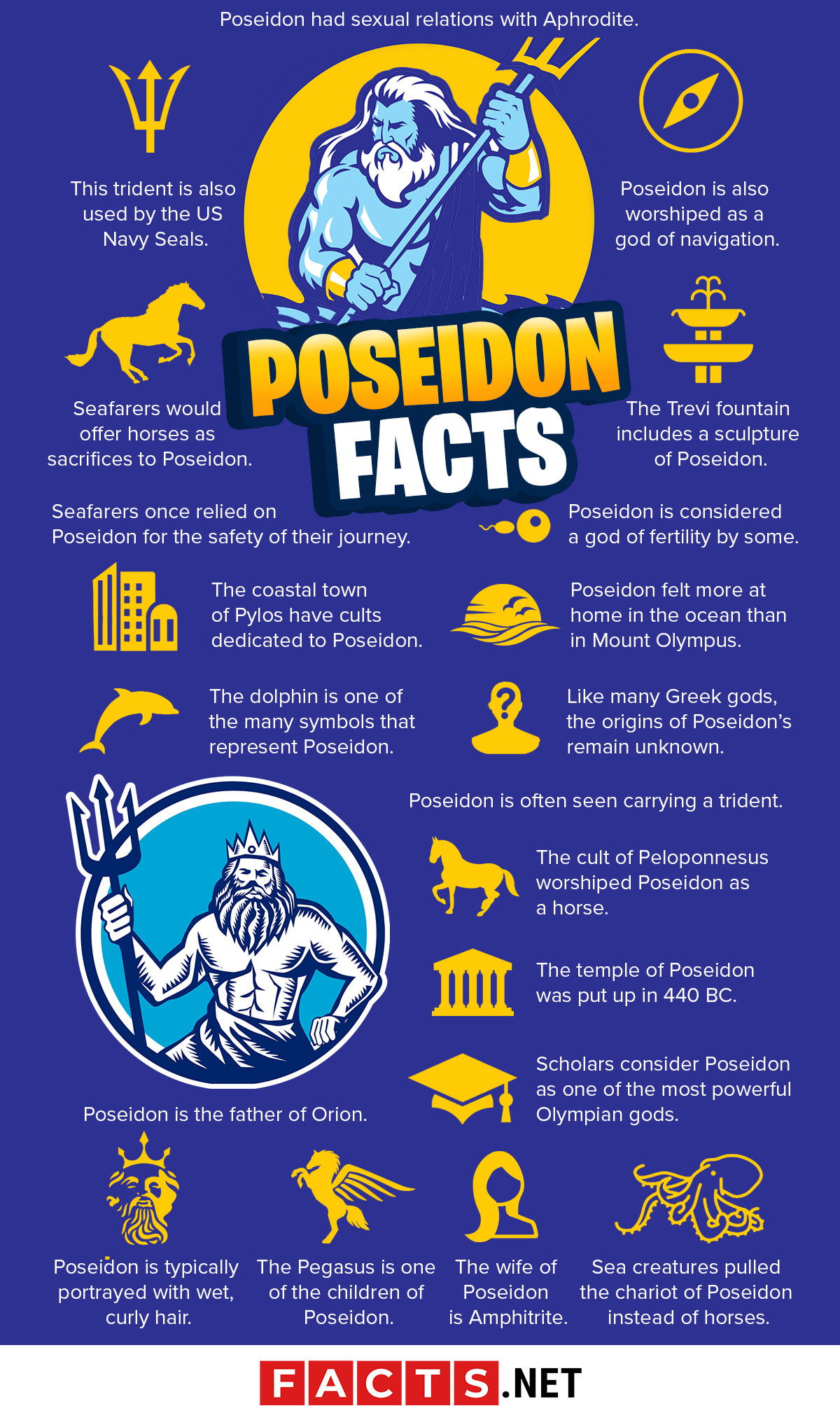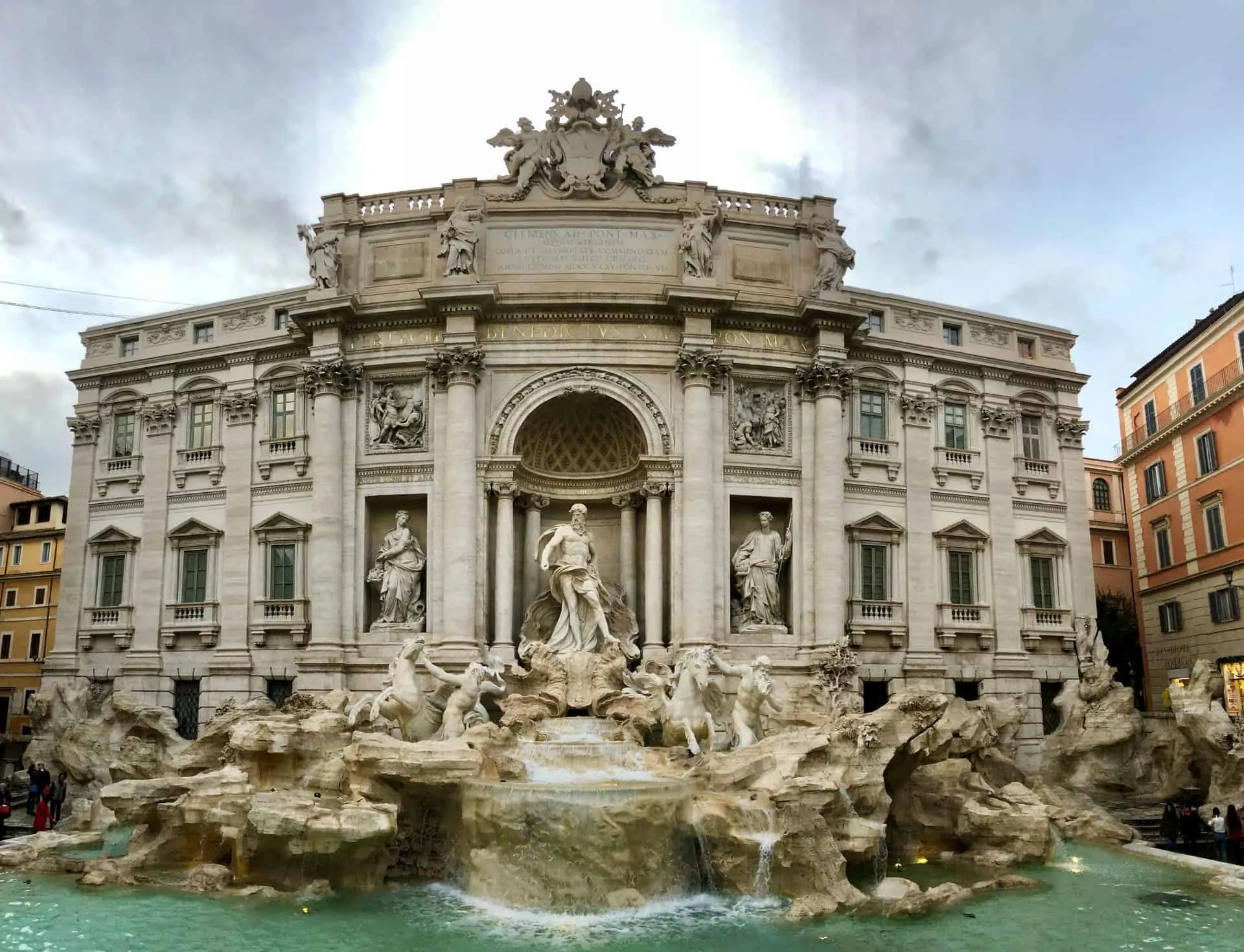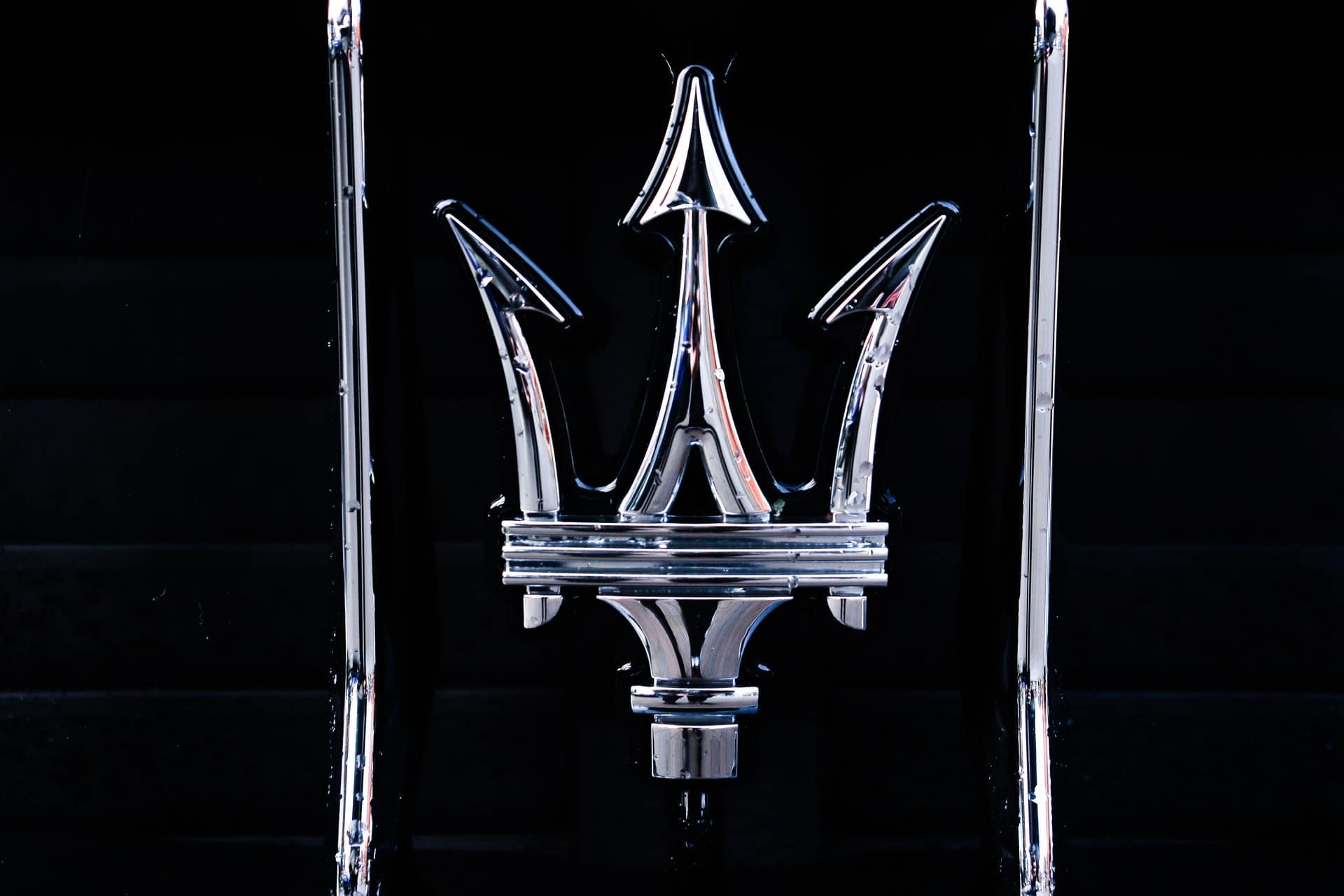
In ancient Greek mythology, Poseidon holds the title of the god of seas and storms. Aside from immortality and great strength, Poseidon stands out for his ability to manipulate bodies of water. However, not many people know about Poseidon beyond his rule over the oceans. While water usually indicates life, water can also take it away. Much like the sea, Poseidon exhibits an unpredictability that would leave mortals at his mercy. Given his record of smiting humans and deities alike, it only makes sense that this god rules over the ocean’s unforgiving waters. Take a closer look at one of the gods of Olympus with these Poseidon facts.
- Poseidon is the Greek god of the sea.
- He is also the Greek god of storms, horses, and earthquakes.
- Poseidon’s most famous brothers are Hades and Zeus.
- His parents are known as Cronus and Rhea.
- Poseidon is one of the twelve Olympians included in ancient Greek religion and mythology.
- Poseidon was given the cult title of ‘Earth Shaker’.
- In the myths of isolated Arcadia, he is related to Demeter and Persephone.
- He was also once venerated as a horse.
- Poseidon is considered to be the protector of seafarers.
- It was Homer and Hesiod who suggested that Poseidon become the god of the sea.
- In the story of the Iliad, Poseidon supports the Greeks against the Trojans.
- In Plato’s Timaeus and Critias, Poseidon owns the city of Atlantis.
- Like many Olympians gods, Poseidon also had several consorts.
- Poseidon has sent disastrous floods into cities when angered to punish those who oppose him.
- Mount Olympus partly belongs to Poseidon.
- Poseidon is often regarded as a tamer or father of horses.
- Poseidon’s Roman equivalent is Neptune.
- He is considered as a protector of many Hellenic cities and colonies.
- Poseidon had several children with several partners.
- Regardless of the version, Poseidon is always portrayed as the second-eldest brother.
Poseidon Facts Infographics

Poseidon has a reputation among most ill-tempered and greedy Olympian gods.
If you’ve ever heard of any Greek legend, you’d know how fickle and petty the gods could be. Throughout Greek mythology, Poseidon has often been portrayed with vengeful tendencies and a fragile ego. Like most other Greek deities, the God of The Sea is notorious for his temper.
Whenever upset, Poseidon would create storms and earthquakes to punish those who wrong him. He also isn’t above bringing hazardous floods and mass destruction to the Earth once angered. How’s that for Poseidon facts?
Like the other major Greek gods, Poseidon got swallowed whole by his father.
Because of a prophecy that warned against his own children overthrowing him, Cronus devoured his offspring as soon as they were born – apart from Zeus.
Upon conspiring with Gaia, Rhea gave birth to Zeus in secret, giving Cronus a wrapped stone to devour in his place. Zeus then grew up to avenge his siblings, eventually tricking Cronus into regurgitating them.
Reunited, the gods worked together to overthrow Cronus and the rest of the Titans.
Seafarers once relied on Poseidon for the safety of their journey.
During the time of ancient Greece, seafarers would often pray to Poseidon in hopes of good sailing weather and safe journeys. Aside from travelers, many people in the Hellenic hinterlands, cities, and colonies worshiped and honored Poseidon.
The Trevi fountain includes a sculpture of Poseidon.
The famous fountain located in Rome, Italy features sculptures of the Greek god of the sea, Poseidon. This art piece was completed by Giuseppe Pannini and many others.
The Trevi Fountain has also been featured in many notable films during the 1950s until the early 2000s.

Poseidon is also worshiped as a god of navigation.
With the sea as his domain, seafarers also considered Poseidon as a god of navigation. Men at sea would often rely on Poseidon’s guidance when caught in sticky situations. However, the god is not widely known for this, rather just referred to as the god of the oceans and storms.
Poseidon is considered a god of fertility by some.
Aside from recognizing him as a ruler of his domain, people also considered Poseidon as a Greek god of fertility. In Greek mythology, Poseidon had several children with most of his sexual partners.
Unlike other gods, Poseidon was also very dedicated to his children. As expected of someone with his temper, Poseidon was always quick to punish those who hurt his kids.

The coastal town of Pylos have cults dedicated to Poseidon.
The cults of Poseidon date as far back as the late Bronze Age. With the location’s significance to Greek myths, it’s no surprise that the first Poseidon cults originated from Pylos in Crete.
Historically, the town held a festival of games every two years in honor of Poseidon. This event included activities such as chariot racing and horse racing.
Poseidon felt more at home in the ocean than in Mount Olympus.
Along with Zeus and Hades, Poseidon technically reigned as one of the three supreme rulers of Mount Olympus. However, despite this, he spent most of his time in his palace underneath the waters.
It is said in Greek mythology that Poseidon preferred being underwater in his home rather than be surrounded by the other gods and goddesses of Mount Olympus.
The dolphin is one of the many symbols that represent Poseidon.
Poseidon is often associated with many nautical objects. Among these symbols, the most widely recognized are the trident and the dolphin.
Traditionally, artists usually depicted Poseidon with dolphins. In these paintings, the god would be surrounded by a pod of dolphins or riding a chariot pulled by them.
Poseidon had sexual relations with Aphrodite.
One of Poseidon’s many affairs included his sister Aphrodite, the goddess of love and desire. However, Aphrodite went on to pursue a relationship with Ares, with the support of Poseidon.
Poseidon’s romance with Aphrodite produced two children: Rhodos and Herophilos.
Poseidon is the father of Orion.
Aside from entanglements with each other, the gods have also been known to pursue affairs with humans and animals alike. Among his many children, Poseidon’s relationship with a king’s daughter produced Orion.
Born to a god and the mortal daughter of King Minos, Euryale, Orion is one of many demigods in Greek mythology. Because of this, Poseidon blessed him with the ability to walk over water.
Like many Greek gods, the origins of Poseidon’s remain unknown.
While it is unclear where the Greek gods get their names from, there have been several theories on their origins. For Poseidon, it is widely believed that his name comes from the Greek language, translating to husband and earth.
This has led to Poseidon’s monikers of “earth-shaker” and “husband of the earth.”
Poseidon is often seen carrying a trident.
Traditionally, people have used the trident for fishing and as a polearm. For centuries, classical art has also portrayed the trident as Poseidon’s weapon of choice.
The trident’s name comes from Latin origins of the word ‘tridens,’ which means three. This likely refers to the number of prongs on the weapon.
The cult of Peloponnesus worshiped Poseidon as a horse.
In Poseidon’s many cults, his worshipers would often offer horses, bulls, and male sheep to the god. His believers would offer these animals as a sacrifice in exchange for Poseidon’s protection on both land and sea.
Additionally, some cults believe that Poseidon takes on the form of a horse running among a herd of stallions. Definitely one of the strangest Poseidon facts.
Some Bronze age Greek tablets state that there was a feminine version of Poseidon.
Ancient Mycenaean Greek inscriptions once stated that Poseidon had a female counterpart known as Posedeia. However, some scholars believe that this figure was simply another unknown consort of Poseidon.

The temple of Poseidon was put up in 440 BC.
During his ascendancy, the Athenian statesman Pericles established the temple of Poseidon. Pericles had the temple built on the ruins of another temple dating back to the Archaic period.
The Poseidon building’s architecture featured a rectangular shape with four colonnades on each side.
Scholars consider Poseidon as one of the most powerful Olympian gods.
All the gods on Mount Olympus have different domains and powers, but only three are generally considered the strongest. This Big 3 includes Poseidon, Zeus, and Hades. Poseidon rules over all bodies of water, with the ability to create earthquakes and storms to cause devastation to his enemies and those who go against him.
Among all other Greek gods, Poseidon is considered to be on par in terms of power with Zeus, the king of gods.
Poseidon is typically portrayed with wet, curly hair.
Many sculptures portray Poseidon with curly hair and a beard. Since he is the god of the sea, Poseidon was also depicted with a wet look distinguished by his hair.
Sea creatures pulled the chariot of Poseidon instead of horses.
Better known as Hippocampuses, Poseidon’s trusty steeds were depicted as horses with fish tails for their lower halves.
Throughout history, many art pieces depicted the god of the sea with two or four of these creatures at a time. In English, these creatures would also often be referred to as sea-horses.
Traditionally, Poseidon is said to have caused most of the occurring earthquakes in Greece.
Many Greeks believe in Poseidon as the god of earthquakes, since the phenomenon is caused by the erosion of rocks in the ocean. Because Poseidon was so ill-tempered, he would often cause earthquakes and cause trouble for mortals.
Poseidon was saved from his father’s stomach by his brother Zeus.
To recover his siblings from Cronus’ stomach, Zeus tricked his father into ingesting an emetic concoction mixed by his grandmother Gaia.
Athena competed with Poseidon for the ownership of the city of Athens.
To settle the competition, the two gods of Olympus held a contest on the Acropolis. According to the myth, the two gods competed to exhibit their godly powers on a rock. Using his trident, Poseidon produced a salt spring or a horse.
Meanwhile, Athena touched the rock with her spear, producing an olive tree from the ground. Despite Poseidon’s attempts, Athena was proclaimed the victor of the contest.
Poseidon ruled over the oceans after defeating Cronus.
After the defeat of Cronus, Poseidon, Zeus, and Hades were each given a part of the world to rule over. After these events, Mount Olympus became home to the twelve Olympian gods and goddesses.
The Pegasus is one of the children of Poseidon.
Poseidon is responsible for the birth of many creatures found in Greek mythology. Among these creatures include the winged horse called Pegasus.
The Pegasus is a child born from Poseidon and Medusa. Like its father, the horse is considered immortal. According to the myth, Pegasus sprouted from the neck of Medusa’s beheaded crown.
Poseidon is rumored to have created the horse.
Among many of his worshipers, Poseidon is also considered to be the god of horses. In Greek mythology, Poseidon’s relationship with the goddess Demeter led to the creation of horses.
The story for its creation states that Poseidon wanted to impress the goddess by creating a beautiful creature never seen before.

Poseidon owned a palace made of jewels under the sea.
The palace was said to be entirely made of corals embedded with the most beautiful jewels in the world. According to the lore, this is also where Poseidon spends most of his time outside of Mount Olympus.
Polybotes and Poseidon were once at war with each other.
Reared by Uranus and Gaia, Polybotes was born to destroy Poseidon. The two faced each other during the gigantomachy, or the war between the giants and the gods.
Poseidon chased him through the sea and threw a chunk of land at him which was known as the island of Nisyros.
Poseidon had a half-human half-fish son.
Among his notable offspring, Poseidon fathered Triton – the first merman in written existence. Also considered the demigod of the sea, Triton was birthed by Amphitrite.
Triton lived with Poseidon in the golden palace found at the bottom of the sea. In some English literature, Triton is portrayed as the messenger for Poseidon.
The wife of Poseidon is Amphitrite.
Amphitrite is the goddess of the sea and is also one of the many daughters of Nereus and Doris. Poseidon chose Amphitrite among her other sisters while they were dancing the isle of Naxos.
In some mythologies and stories, Amphitrite was not the sole wife of Poseidon.
Poseidon has several preserved sculptures located globally.
In many European countries, several statues of Poseidon can be found preserved in museums and historical landmarks. A common trait these statues have is the bearded and curly hair, as well as a trident in his possession.
Some of these sculptures can be found in Germany, England, Denmark, and Slovakia.
Alexander the great once prayed to Poseidon for safe voyages.
Before the battle of Issus, it was said that Alexander the Great first visited the shores of Syria to pray to Poseidon. Alexander the Great asked Poseidon to cast a four-horse chariot into the sea for the war.
Three elder cyclopes made Poseidon's trident.
The cyclopes were also responsible for forging the signature weapon of Zeus, the lightning bolt. Poseidon’s trident wields power over the sea, with the power to create a wave or tsunami. Poseidon also uses this trident to strike land, triggering earthquakes.
This trident is also used by the US Navy Seals.
In a special warfare insignia, the United States Navy Seals use the trident in their logo. This is also known as the SEAL Trident or The Budweiser.
This insignia is worn by those who complete the basic underwater demolition training and qualification tests.
Poseidon had many children.
In many stories, Poseidon is considered the father of many heroic icons in Greek mythology. However, not all of Poseidon’s children were human.
Some were a half-human and half-animal, while others were completely animal. Poseidon is also responsible for many mythological creatures such as the cyclops and the pegasus.
The trident of Poseidon is used as a universal symbol of the sea.
According to two Vatican Mythographers, the trident of Poseidon symbolizes the three properties of water. This includes potability, liquidity, and as well as its fecundity.
However, Roman scholars believed that the three prongs of the trident represent being the third part of the world. Another theory states that this may symbolize the three types of bodies of water such as the sea, rivers, and streams.

Seafarers would offer horses as sacrifices to Poseidon.
Poseidon is well known for his ill-temper and wrath. As such, seafarers often brought horses with them aboard their ships to offer as a sacrifice to the god when angered.
This is thought to please Poseidon and ensure a safe voyage while at sea.
Poseidon’s trident can be found on the flag of Barbados.
The trident on the flag symbolizes the same trident that Poseidon possesses in Greek mythology. However, the shaft of the trident on the flag is noticeably broken.
It is said that this symbolizes how Barbados cut ties with Britain and describes its history.
In 1989, Poseidon’s son was featured in The Little Mermaid.
In this Disney film, Poseidon’s son Triton served as the current King of the city of Atlantica. Triton is portrayed to be an old merman with several daughters, including the main character, Ariel.
In the film, he takes on a major role and parental guide to the main character.
Poseidon often forced himself onto his consorts.
In Greek mythology, it is not considered strange for the twelve Olympian gods to have more than one consort. Poseidon was known to have relationships with both gods and mortals.
Some stories also indicate that Poseidon had affairs with men as well. The majority of the time, Poseidon would often force himself onto his partners to have children with him.
One of Poseidon’s sons is a cyclops.
Polyphemus is the son of Poseidon from his affair with Thoosa. This cyclops is mentioned in Homer’s Odyssey, with his name said to mean ‘abounding in songs and legends’.
In later classical literature, Polyphemus was written as heterosexual with his name linked to the nymph called Galatea.
Poseidon had sexual relations with Medusa.
In many stories in Greek mythology, it is stated that Poseidon forced himself onto Medusa. Shortly after, she was beheaded by the hero Perseus who later used her head as a weapon that can turn others into stone.
Medusa also bore a child for Poseidon: a winged horse called Pegasus.
Poseidon has also made sexual advances on mortal women.
In particular, Poseidon made advancements on a mortal woman named Tyro who was married to Cretheus. However, this girl was interested in a river god named Enipeus who refused her advancements.
Filled with lust, Poseidon disguised himself as the girl’s love interest and romantically engaged with her. From this union, twin boys were born: Pelias and Neleus.
Poseidon was said to be raised by Telchines on the island of Rhodes.
The Telchines were said to be the original inhabitants of the island of Rhodes. To some, these islands were also known in Crete and Cyprus.
Some stories claimed that Poseidon was raised by the inhabitants of this island in ancient Greece. However, some versions of the story state that Poseidon may have been a parental figure to the inhabitants of the island. Definitely one for conflicting Poseidon facts.
It is said that Poseidon won his ruling over the sea through a game of dice.
In one version of the story, it was said that the three parts of the world were divided between Zeus, Hades, and Poseidon through a game of dice. This was done to fairly give each god a chance in ruling a particular domain.
In other versions of the story, the three gods drew lots to see who would get which domain. In the end, Zeus was given the sky, Poseidon was given the sea, and Hades was given the underworld.
Poseidon had an active role during the war against Troy.
During the war, Poseidon and Apollo planned to overthrow Zeus and become the Kings of Mount Olympus. However, Zeus became aware of this before Poseidon could do anything and foiled their plans.
Instead, Poseidon and Apollo were given tasks to build walls around Troy.
Poseidon had a long feud with Odysseus who nearly blinded his son.
In many stories in Greek mythology, Poseidon holds a lengthy grudge against Odysseus ever since he attempted to blind his son Polyphemus. Poseidon punished Odysseus by not letting his men return to Ithaca until ten years after the destruction of Troy.
Poseidon went through great lengths to inconvenience Odysseus as punishment for hurting his cyclops son.
There is an ancient text that finds Poseidon responsible for epilepsy.
In many Hippocratic texts, it was said the Poseidon is responsible for the development of several forms of mental disturbances. These include certain types of epilepsy and mental fears.
Was this page helpful?
Our commitment to delivering trustworthy and engaging content is at the heart of what we do. Each fact on our site is contributed by real users like you, bringing a wealth of diverse insights and information. To ensure the highest standards of accuracy and reliability, our dedicated editors meticulously review each submission. This process guarantees that the facts we share are not only fascinating but also credible. Trust in our commitment to quality and authenticity as you explore and learn with us.
